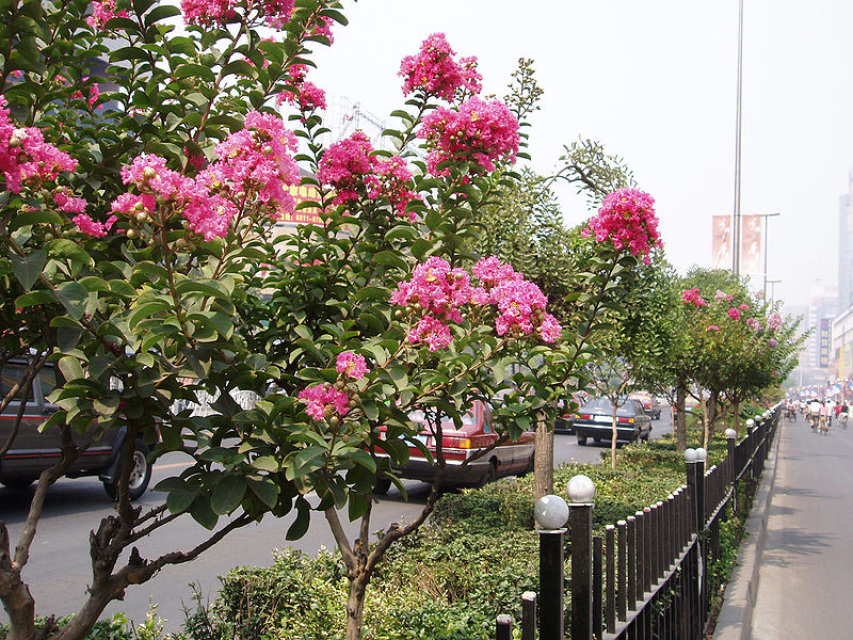- Home
- >
- Broadleaved Tree Seeds J-Z by Latin Name
- >
- Crape Myrtle (lagerstroemia indica)
Crape Myrtle (lagerstroemia indica)
SKU:
£1.25
1.25
10
£1.25 - £10.00
Unavailable
per item
Seed Prices
1 gram (approx 85 seeds) £1.25
2 grams (approx 170 seeds) £1.80
5 grams (approx 425 seeds) £2.45
10 grams (approx 850 seeds) £3.20
25 grams (approx 2125 seeds) £6.00
50 grams (approx 4250 seeds) £10.00
Please note that these seeds require 4 weeks stratification before they will germinate. For a sowing date of March 1st this should begin on January 31st
Use the drop down button to select the seed quantity
Germination, Sowing and After Care Information for
Crape Myrtle (lagerstroemia indica)
Crape Myrtle seeds are relatively easy to germinate and grow. The dormancy within the seed is short and easily broken. This is achieved by a short period of cold stratification in the fridge.
You can do this by first soaking the seeds in water for 24 hours. Fully drain away all of the water and place the seeds in a zip-lock freezer bag. Place the seeds in the fridge, it is important that during this period that the seeds do not dry out or are waterlogged otherwise the pretreatment will be ineffective.
After 4 weeks under these conditions the seeds are ready to be sown. Performing this process of cold stratification will increase the synchronization of germination and also the number of seedlings that germinate.
You can also choose to mix the seed with moistened vermiculite, fine perlite or sand. These help to stop the seeds from clumping together and allow more between the seeds.
Fill your chosen container with a good quality general potting compost and firm it down well. Suitable containers could be plant pots, seed trays or plug trays or even improvised containers with drainage holes. Firm the compost gently and sow the seeds on the surface, if you have pretreated your seeds without any vermiculite/perlite etc the seeds will be difficult to separate from each other. If you add a little dry sand at this point and mix thoroughly you will find that the sand separates the seed and makes it much easier to sow.
Cover the seeds with a couple of millimeters of vermiculite or failing that a fine layer of sieved compost. Follow with a gentle watering and keep them a little warmer than room temperature if possible.
Germination will begin from a few weeks following sowing. The seedlings are very small and delicate, they need to be kept out of hot sun until the first true leaves emerge. Shading and a moist seedbed are very important for successful germination.
Keep the seedlings well watered and free from competing weeds. Growth will accelerate in the second and subsequent years and the developing young trees should be planted in their permanent position usually by the end of their second year.
You can do this by first soaking the seeds in water for 24 hours. Fully drain away all of the water and place the seeds in a zip-lock freezer bag. Place the seeds in the fridge, it is important that during this period that the seeds do not dry out or are waterlogged otherwise the pretreatment will be ineffective.
After 4 weeks under these conditions the seeds are ready to be sown. Performing this process of cold stratification will increase the synchronization of germination and also the number of seedlings that germinate.
You can also choose to mix the seed with moistened vermiculite, fine perlite or sand. These help to stop the seeds from clumping together and allow more between the seeds.
Fill your chosen container with a good quality general potting compost and firm it down well. Suitable containers could be plant pots, seed trays or plug trays or even improvised containers with drainage holes. Firm the compost gently and sow the seeds on the surface, if you have pretreated your seeds without any vermiculite/perlite etc the seeds will be difficult to separate from each other. If you add a little dry sand at this point and mix thoroughly you will find that the sand separates the seed and makes it much easier to sow.
Cover the seeds with a couple of millimeters of vermiculite or failing that a fine layer of sieved compost. Follow with a gentle watering and keep them a little warmer than room temperature if possible.
Germination will begin from a few weeks following sowing. The seedlings are very small and delicate, they need to be kept out of hot sun until the first true leaves emerge. Shading and a moist seedbed are very important for successful germination.
Keep the seedlings well watered and free from competing weeds. Growth will accelerate in the second and subsequent years and the developing young trees should be planted in their permanent position usually by the end of their second year.



